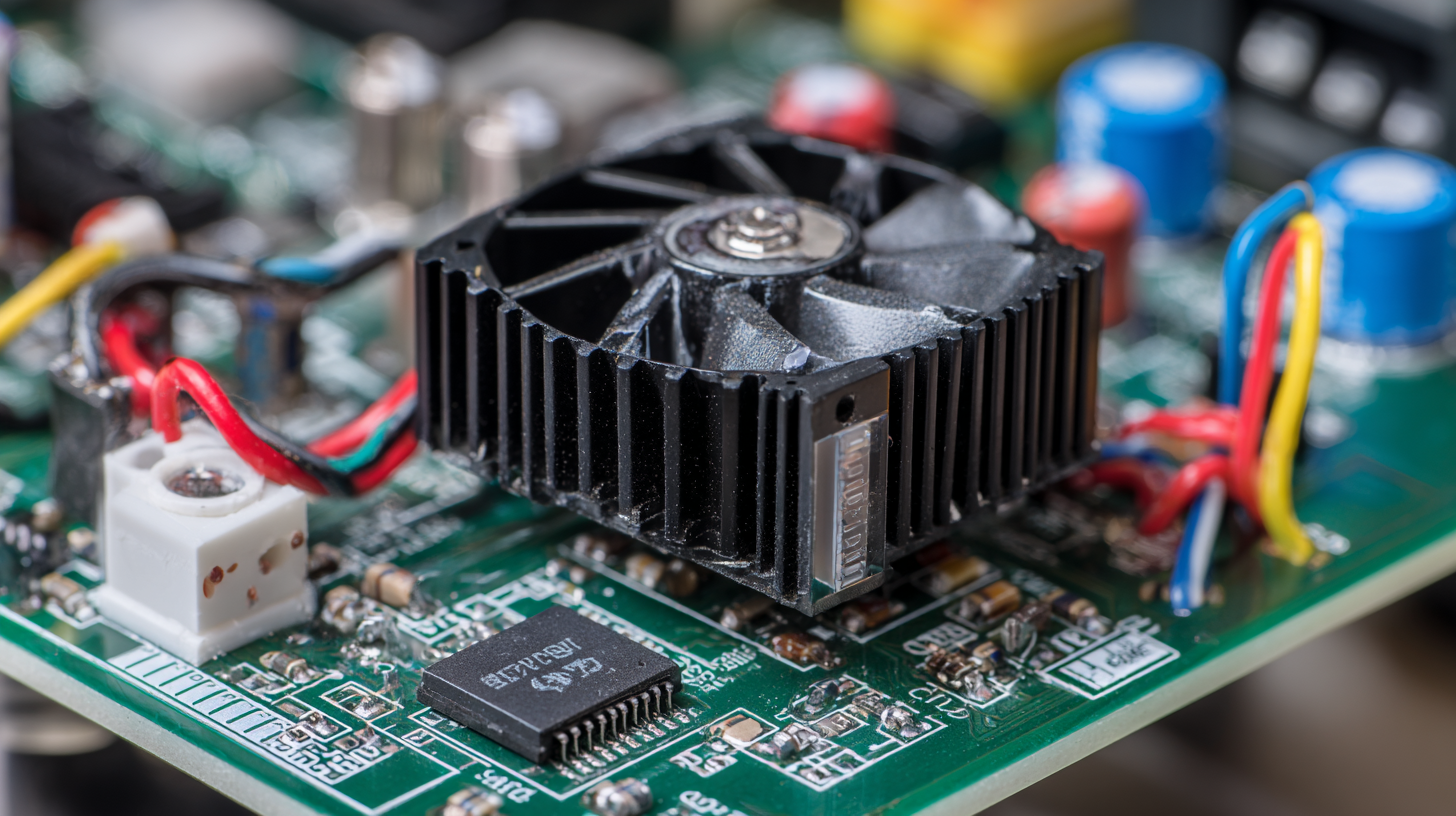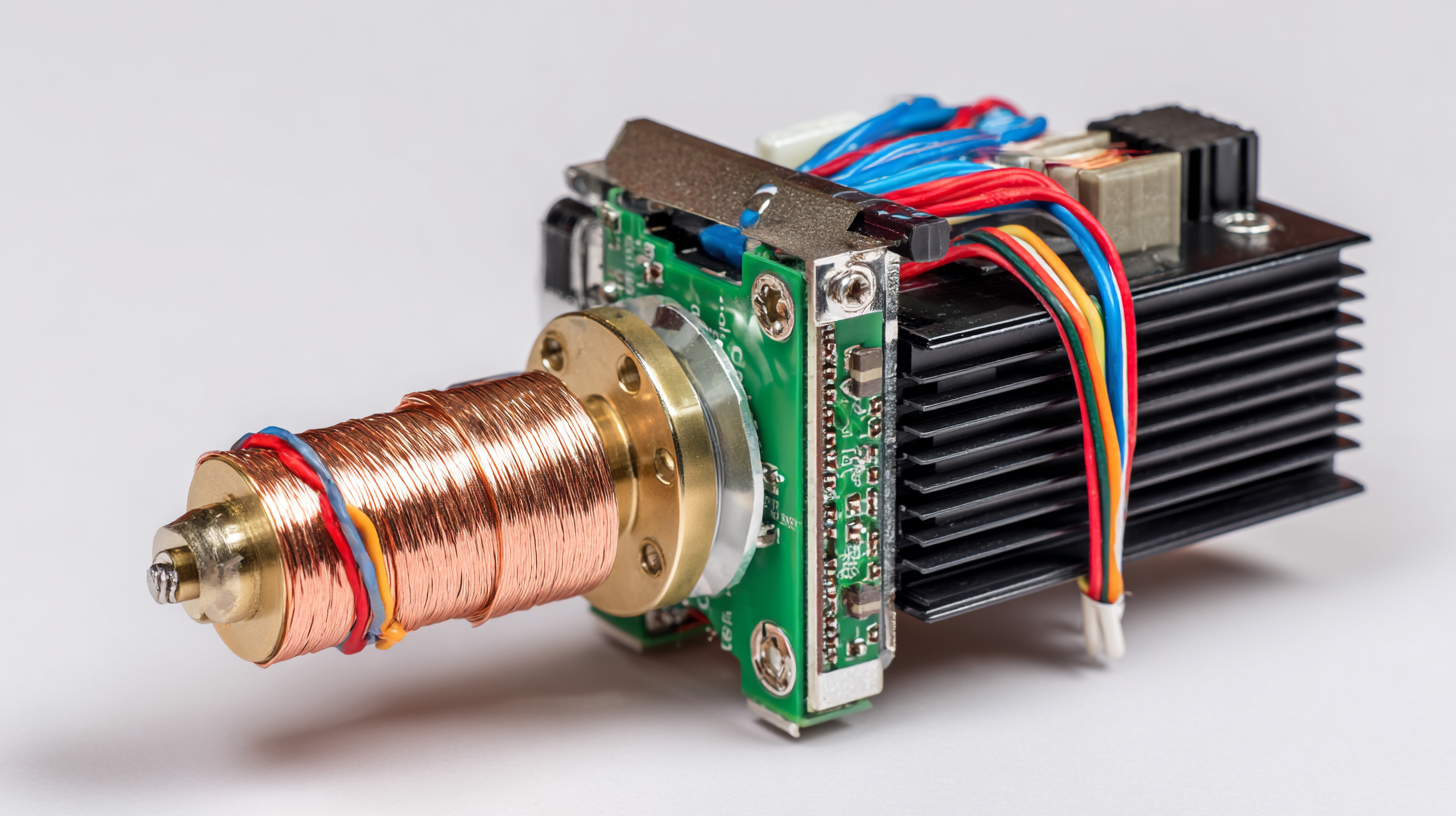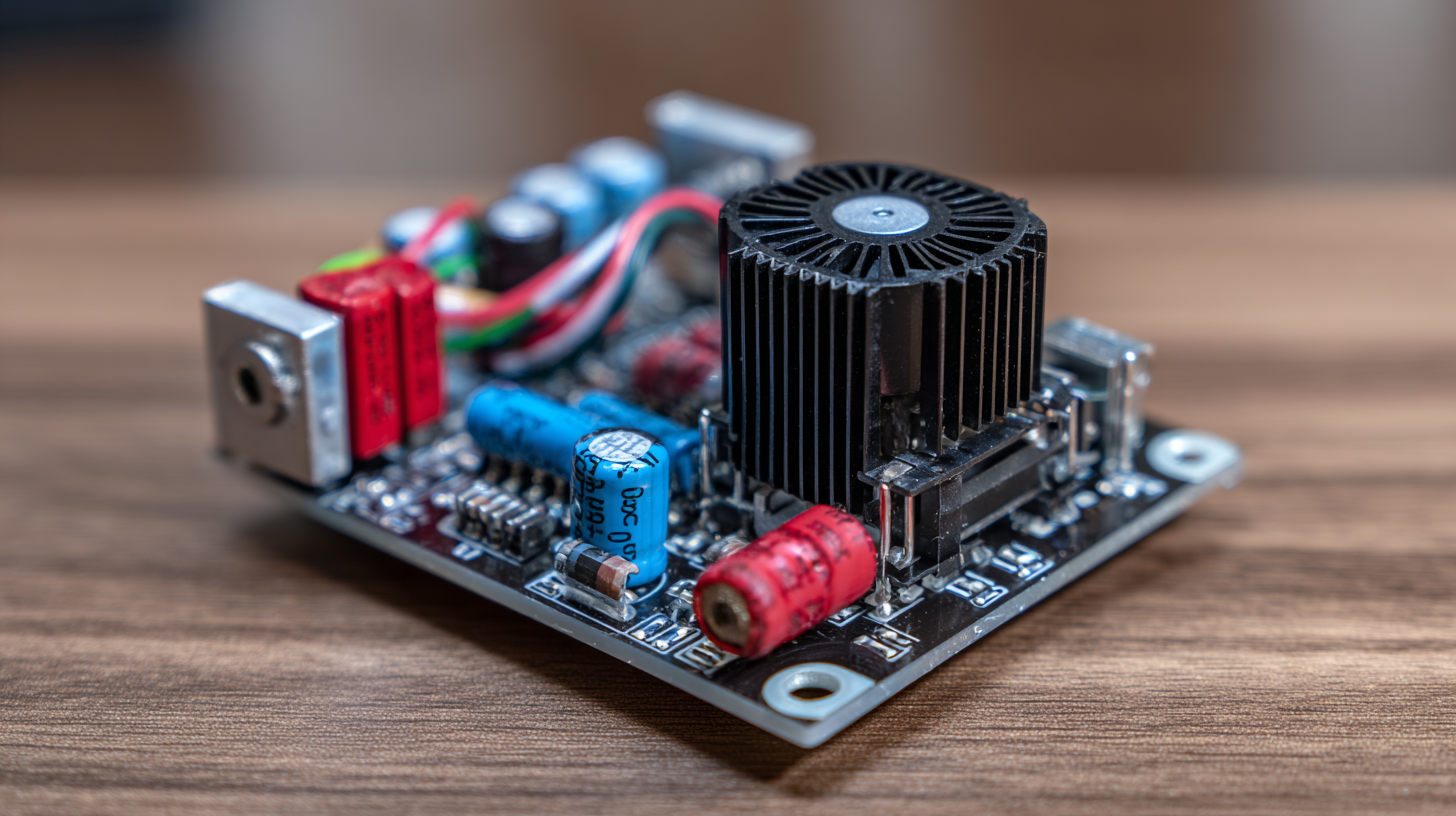
-
Home
-
Products
-
Application
-
Documents
-
News
-
Blog
-
Blog
-
Sinsegye
Leave Your Message
-
Wechat OA

-
 Baijia Hao
Baijia Hao



 Baijia Hao
Baijia Hao

In the rapidly evolving landscape of industrial automation, the demand for precise motion control has never been greater. According to a recent report by MarketsandMarkets, the global stepper motor market is projected to reach $4.08 billion by 2025, driven by advancements in technology and increasing applications across various industries, including robotics, aerospace, and medical devices. Central to the effectiveness of stepper motors is the Stepper Motor Driver, a critical component that translates control signals into precise movements. As manufacturers and engineers look for reliable and efficient solutions, understanding the top features that distinguish the best stepper motor drivers becomes paramount. This blog will explore industry application cases and offer insights into the selection process, providing global buyers with a comprehensive guide to optimizing their motion control systems.

As we look towards 2025, the market for stepper motor drivers is poised for significant transformation, driven by advancements in technology as well as evolving industry demands. The global push for automation across various sectors, including manufacturing and robotics, is increasing the reliance on precise motion control systems. This trend is fuelled by the rising need for energy efficiency and enhanced performance in applications such as 3D printing, CNC machinery, and automated assembly lines. Buyers are focusing on stepper motor drivers that offer higher torque, improved thermal management, and compatibility with smart technologies.
The anticipation of market growth is underscored by projections of a compound annual growth rate that surpasses 30% in related industries. As companies in the automation and robotics domains expand their offerings, the introduction of innovative features will be crucial. Stepper motor drivers that are capable of seamless integration with IoT systems, and that provide real-time data analytics for performance optimization, are expected to capture a significant share of the market. This evolution not only reflects the current technological landscape but also sets the stage for the future of motion control solutions worldwide.
| Feature | Description | Market Trend 2025 | Potential Applications |
|---|---|---|---|
| Current Rating | Defines the maximum current the driver can handle | Increasing demand for higher current ratings | 3D printers, CNC machines |
| Microstepping Capability | Ability to divide the step into smaller increments | More manufacturers are adopting microstepping | Robotics, automation |
| Control Interface | Type of interface (TTL, SPI, etc.) used to control the driver | Shift towards more user-friendly interfaces | IoT devices, industrial machinery |
| Thermal Protection | A built-in feature to monitor and protect against overheating | Increasing importance of thermal management | Electric vehicles, power tools |
| Voltage Range | The range of input voltages supported by the driver | Need for versatile voltage options | Home automation, drones |
When it comes to selecting the best stepper motor drivers, several key technical features play a critical role in their performance and usability. One of the most important characteristics is the driving mode, which can significantly impact the torque and speed of the motor. Microstepping, for instance, allows for smoother motion and finer control, making it ideal for applications requiring high precision. Evaluating the driver’s ability to handle different current ratings and its thermal management capabilities is essential, as these factors ensure the longevity and reliability of the motor.
Another notable feature is the integration of feedback mechanisms. Closed-loop systems can increase efficiency and response time, reducing the risk of missed steps that can occur with open-loop systems. Moreover, advanced drivers often include built-in protections against overcurrent and overheating, which safeguard both the driver and the motor from potential damage. Furthermore, compatibility with various control platforms enhances versatility, making it easier for global buyers to integrate these drivers into different setups, from hobby projects to industrial applications. These technical aspects should be thoroughly examined to ensure the selection of the best stepper motor driver for any specific purpose.
The stepper motor driver market is witnessing significant growth, primarily driven by advancements in automation and robotics across various industries. According to a recent report by MarketsandMarkets, the global stepper motor driver market is projected to grow from $1.2 billion in 2023 to $2.0 billion by 2028, at a compound annual growth rate (CAGR) of 10.5%. This surge is largely attributed to the increasing demand for high-precision motion control systems in sectors such as aerospace, automotive, and healthcare, where accuracy and reliability are paramount.
Moreover, the rise of Industry 4.0 and the Internet of Things (IoT) is propelling the integration of smart technologies into manufacturing processes. A report by Research and Markets emphasizes that the growing trend of miniaturization in electronics is also enhancing the adoption of compact and efficient stepper motor drivers. This trend is boosted by energy efficiency requirements and the need for adaptive systems that can cater to complex production lines. As more companies invest in automation to enhance productivity and reduce operational costs, the demand for innovative stepper motor driver solutions is anticipated to escalate, further shaping the future of this dynamic market.

In the rapidly evolving landscape of automation and robotics, the choice of a stepper motor driver can significantly impact performance and efficiency. The best brands in stepper motor driver technology have invested heavily in innovation to cater to the diverse needs of global buyers. Leading brands such as Trinamic, Texas Instruments, and STMicroelectronics stand out, each offering unique features that enhance usability and functionality. For instance, Trinamic's advanced drivers are renowned for their sophisticated micro-stepping algorithms that enable smoother motion and precise control, catering well to high-resolution applications.
Moreover, Texas Instruments has made a name for itself with integrated solutions that simplify design complexities while providing robust performance. Their stepper motor drivers offer built-in diagnostics and thermal management systems, enhancing reliability in demanding environments. On the other hand, STMicroelectronics is known for its compact and energy-efficient designs that are particularly beneficial for portable applications. Their focus on reducing power consumption while maintaining high performance positions them as a favorable option for environmentally conscious buyers looking to optimize their systems. Each of these leading brands combines technology and practicality, ensuring that consumers can select the driver that best aligns with their specific requirements.

As technology continues to evolve, the future of stepper motor drivers holds exciting innovations that promise to enhance efficiency and performance.
One of the most significant trends is the integration of advanced control algorithms. These algorithms allow for finer microstepping, reducing vibration and improving accuracy.
By utilizing artificial intelligence, manufacturers can develop drivers that adapt in real-time to loads and environmental changes, ensuring optimal performance across various applications.
Another key innovation is the development of more efficient power management systems. Future stepper motor drivers are likely to incorporate cutting-edge energy-saving features that minimize power loss and reduce heat generation.
This not only extends the lifespan of the motor but also lowers operating costs for global buyers, making these drivers more environmentally friendly.
Additionally, the rise of IoT-enabled motors will lead to smarter systems that provide users with real-time data on performance metrics, enabling predictive maintenance and further increasing operational efficiency.